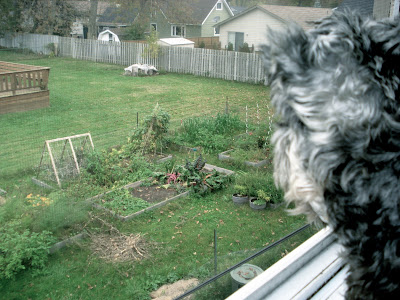No walls, no paint, no flooring... why do things in a sensible order??
Although the living room looks the same as it did last spring (i.e. no drywall, still has crappy green carpet on floor), I went ahead and bought new living room furniture. I sold the furniture I had in Saskatoon before I left, since it wasn't worth the cost to move it home. So, for the past three years (THREE YEARS?!? It's been three years?? Yikes!), all I've had is a hand-me-down hand-me-down love seat in a horrible burnt orange colour - the one that appears in a lot of the pictures posted here. It was my parents', back in the day (we're talking mid 80s here), then they gave it to my sister, who then gave it to me. Now, I'm happy I had the use of it for the last three years (!!!), but I'm even happier it will be going far, far away very soon.
After looking at a number of stores, I ended up ordering a couch, love seat and chair from Stoney Creek Furniture. They have a HUGE selection, and while their prices are a bit more than other places, the service and selection cannot be beat.
And more important: they sell furniture from Canadian manufacturers.
Another reason I bought there was the VAST fabric selection: I knew I wanted a dark grey couch and love seat, then some sort of brighter fabric for the chair. The sales staff spent literally hours with me, making sure I got exactly what I wanted, without any pressure to buy. And it arrived today!
Sorry for the crappy pics, but all the furniture is shoved to one end of the room, until I can organize a bit more :)
The couch:

Wonder where I got the colour scheme pf grey and cream from???
I haz new couch. (He needs a new haircut!)
And the chair!! It swivels!!!!
Yeah, crazy green fabric! But I love it. I never would have picked it out on my own, but it goes great with the rest of the furniture, and won't clash with the kitchen and dining room.
This furniture is well made, Canadian-made, and should last almost forever. And when the sales clerk realized I was in the middle of renovating, she went one step above and beyond any other furniture store I have even dealt with: she sent fabric swatches to help me with the rest of the decorating.
Now, if I only had walls....




















